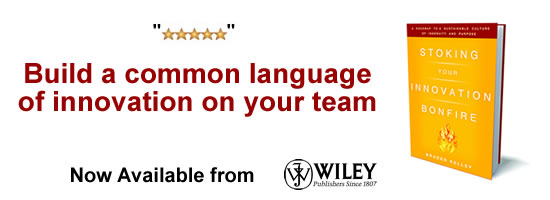The Eight Pillars of Innovation

Recent years have seen the unprecedented progression of digital advances, with artificial intelligence and virtual reality making the stuff of science fiction movies not quite as unrealistic as previously thought. Combine this with a new generation of employees and consumers harbouring fresh expectations and it is easy to understand why innovation is enjoying a renewed sense of necessity and urgency.
Innovation can seem like a bit of a minefield and it can be difficult to know where to begin when there is so much to consider. Here we outline eight pillars of innovation which will help businesses build their own effective and actionable innovation blueprint.
1. Missions, Visions & Goals
Naturally, the first step of any business strategy must be to establish clear objectives. This should not just be limited to the innovation-related goals, it should also encompass the wider company values and overarching business objectives. These are essential for supporting the overall culture and identity of an organisation, which in turn are the foundations of a successful workplace innovation culture.
Without a clear vision, an innovation strategy will never reach its full potential. A mission statement will help to guide the decision-making process and clear values can be used to educate customers and retain employees. Transparency will ensure all stakeholders are aligned and working cohesively.
2. Challenges & Opportunity Briefs
Crowdsourcing should be at the heart of an innovation strategy and will be one of the key drivers of idea generation and creativity. In order to mediate the process and ensure useful ideas that are relevant to the business objectives and current issues faced by the organisation, it is necessary to publish challenges and opportunity briefs. These will encourage employees or external participants to generate solutions to a specific need or problem.
Challenges can involve both internal and external stakeholders. Open innovation is a smart approach for the connected digital world, as it allows you to leverage the input from your customer base or other interested parties and partners.
3. Capturing Ideas
“The average employee contributes six separate innovative ideas over the year, however according to 57% of workers, these aren’t being captured or recorded.†– PwC, ‘Unleashing the power of innovation’
One of the biggest barriers to successful innovation is an inability to capture ideas. Without an effective system in place to curate ideas and turn them into practical processes that generate real results, an innovation strategy will fall flat at the first hurdle. An idea management software is the most reliable system to ensure that ideas are captured. Once such a software is in place, employees must be incentivised to contribute.
4. Collaboration & Interaction
An idea is just the starting point. Very few ideas are fully formed or perfect from the moment they are proposed; they need to be developed, criticised and improved. This is where collaboration and interaction come in, sparking conversations around an idea that can reveal any potential pitfalls or problems. By encouraging constructive criticism and involving different perspectives, an idea can be developed to reach its full potential and is more likely to survive the implementation process.
5. Business Case & Curation
A natural extension of the collaboration phases is the curation process. Only a handful of ideas will make it to the implementation stage so it is crucial that the right ideas are pushed forward. Ideas which generate the most buzz and engagement are always good contenders, but they also need to make it past the senior management team. A business case should be put forward and the idea pitched to the most appropriate decision maker. This process ensures careful vetting of ideas and helps to avoid wasted time or resources on ideas that are not worthy of pursuit.
6. Implementation & Execution
You have the winning idea, you have the backing of fellow colleagues and you have the approval from top-level staff. Now it’s time for implementation. We often feel it is a nice touch to allow the person who put forward the idea to manage the process of execution. Ensure transparency and company-wide awareness in order to prepare staff for any changes. Consider deploying project management tools to help guide the process, such as Trello, Jira and Sharepoint.
“85% of companies use digital systems such as project management platforms to manage the innovation process.†– Accenture, ‘Innovation: Clear Vision, Cloudy Execution’
7. Measure, Adapt, Refine & Fail
Constant review and analysis throughout the implementation process is crucial. Adopting an agile approach is necessary to enable frequent review and readjustment where appropriate. By the end of the process, you will already be in a position to assess the success of the implementation and this will serve as useful guidance when curating ideas in the future.
Just remember that not every idea will be a success; failure is part and parcel of innovation. It will only help you to improve the next time around and will enable you to learn more about your business and customers than you thought possible.
8. Reward & Recognise
Even the most dedicated employee needs a little incentive. Afterall, we’re only human. Displaying recognition for the best ideas and supporting this acknowledgement with a reward is key to maintaining a workplace innovation culture in the long run.
Rewards are not just for internal staff but are also necessary to include in an open innovation strategy. By offering a reward, you are more likely to generate better quality ideas from more experienced contributors. Plus, don’t forget that an organisation’s reputation is directly affected by open innovation because it is usually public. All the more reason to give credit where credit is due.
Download the whitepaper on the eight pillars of innovation for further information, statistics and actionable insights into how technology can facilitate each stage of the innovation process.
Image credit: blog.abila.com
Wait! Before you go…
Choose how you want the latest innovation content delivered to you:
- Daily — RSS Feed — Email — Twitter — Facebook — Linkedin Today
- Weekly — Email Newsletter —
 Owen Hunnam is a serial entrepreneur, currently co-founder and CEO of Idea Drop, an idea management software designed to help businesses capture and action the best ideas from their people. He is also an experienced strategy and innovation expert and works with a wide range of fortune 500 organisations across a broad range of sectors, helping them plan and execute their innovation programmes.
Owen Hunnam is a serial entrepreneur, currently co-founder and CEO of Idea Drop, an idea management software designed to help businesses capture and action the best ideas from their people. He is also an experienced strategy and innovation expert and works with a wide range of fortune 500 organisations across a broad range of sectors, helping them plan and execute their innovation programmes.
NEVER MISS ANOTHER NEWSLETTER!
LATEST BLOGS
How To Stay Connected to Your Co-Workers as a Digital Nomad
The digital nomad lifestyle has grown dramatically in recent years. The number of digital nomads has increased by 42%…
Read MoreCarbon neutrality: what is it, how to achieve it and why you should care
When sustainability is on the agenda, you’re likely to hear many terms mentioned that you may or may not be…
Read More


